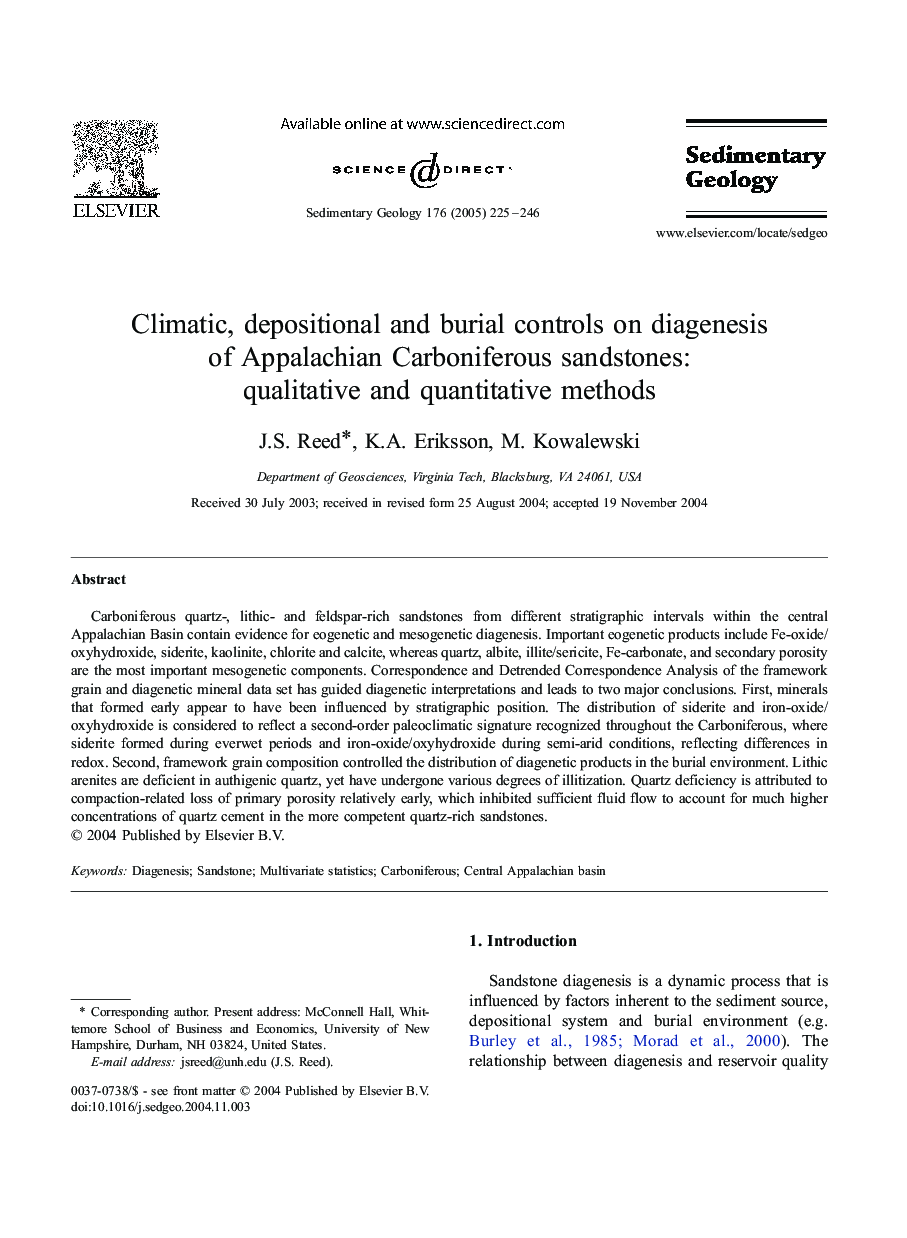| Article ID | Journal | Published Year | Pages | File Type |
|---|---|---|---|---|
| 9526190 | Sedimentary Geology | 2005 | 22 Pages |
Abstract
Carboniferous quartz-, lithic- and feldspar-rich sandstones from different stratigraphic intervals within the central Appalachian Basin contain evidence for eogenetic and mesogenetic diagenesis. Important eogenetic products include Fe-oxide/oxyhydroxide, siderite, kaolinite, chlorite and calcite, whereas quartz, albite, illite/sericite, Fe-carbonate, and secondary porosity are the most important mesogenetic components. Correspondence and Detrended Correspondence Analysis of the framework grain and diagenetic mineral data set has guided diagenetic interpretations and leads to two major conclusions. First, minerals that formed early appear to have been influenced by stratigraphic position. The distribution of siderite and iron-oxide/oxyhydroxide is considered to reflect a second-order paleoclimatic signature recognized throughout the Carboniferous, where siderite formed during everwet periods and iron-oxide/oxyhydroxide during semi-arid conditions, reflecting differences in redox. Second, framework grain composition controlled the distribution of diagenetic products in the burial environment. Lithic arenites are deficient in authigenic quartz, yet have undergone various degrees of illitization. Quartz deficiency is attributed to compaction-related loss of primary porosity relatively early, which inhibited sufficient fluid flow to account for much higher concentrations of quartz cement in the more competent quartz-rich sandstones.
Related Topics
Physical Sciences and Engineering
Earth and Planetary Sciences
Earth-Surface Processes
Authors
J.S. Reed, K.A. Eriksson, M. Kowalewski,
